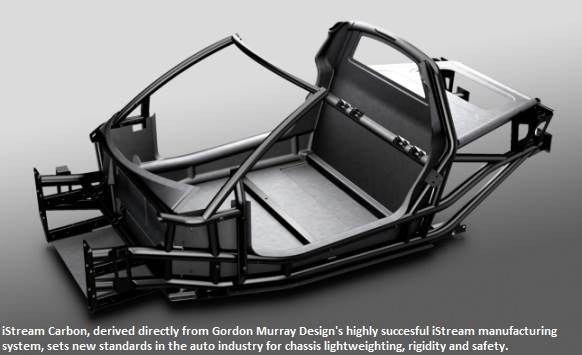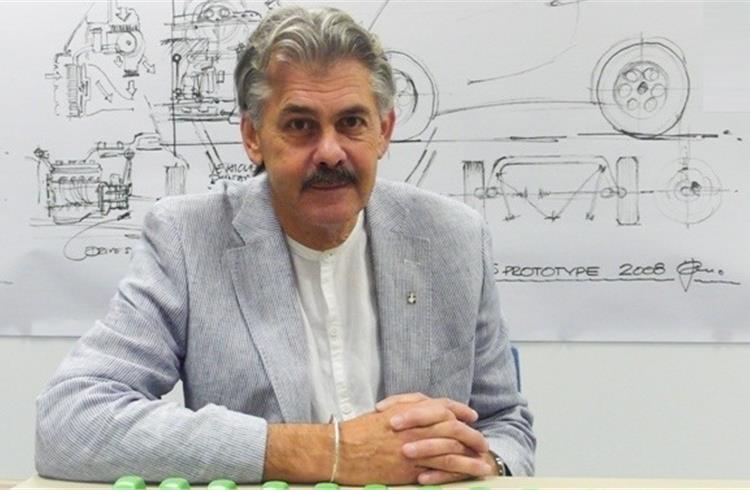The future of automotive manufacturing
'Apple's and Google's strategy can be developed from a much freer thinking platform and their business model will have very different inputs and more productive outputs than our standard automotive business model and ROI calculation.'
There are so many new factors influencing and challenging the standard automotive manufacturing model, some elements of them already with us and some due to arrive in the near future, but all of them will surely combine to produce a new and varied product and manufacturing model that will represent the greatest change since we began mass producing motor cars.
The most visible and topical area of influence and change is the automotive engineer’s push to reduce emissions as legislation drives targets down to ever more difficult targets. The relative real world benefits of future fuels and future powertrain technologies are still very much a matter of debate and although we have witnessed high levels of investment in BEV and hybrid technologies and platforms, there remain important issues with the speed of development of the support infrastructure and the full understanding of the true well to wheel emissions picture.
There is some movement in the development of hydrogen fuel cells, but once again issues with the infrastructure and lifecycle analysis means future emissions legislation will almost certainly focus on manufacturing energy (as it already has in other industries) as tailpipe emission reduction targets are met and the uptake of BEVs and Hybrids increase. The internal combustion engine improvements are now very much in the ‘law of diminishing returns’ area and of course, the recent VW scandal has cast doubt over the diesel emissions performance. The outfall from the VW situation may have a huge impact on both manufacturers’ declared emission and global emission calculations as the average discrepancy between ‘official’ fuel consumption and real world emission figures is around 25 percent.
Another area of change will certainly have to be a reversal in the current automotive trend for ever increasing footprint and weight which is currently driven by accountants and marketing departments! We have witnessed a trend in engine downsizing in the current decade, but with no corresponding footprint reduction this, in turn, has produced a renewed interest in lightweighting which has brought both higher product costs and higher lifecycle emissions through material selections such as aluminium for BIW structures. The answer here is structural composites as typified by our iStream bonded composites manufacturing technology.

A potentially large influence on product design manufacturing and indeed the complete vehicle ownership model will come from new entrants into the automotive sector. Well-funded and unencumbered entities such as Apple and Google have no existing model or ‘baggage’ as they are entering the sector at a time when the very core of the vehicle purchase and usage models are changing. Their strategy can be developed from a much freer thinking platform and their business model will have very different inputs and more productive outputs than our standard automotive business model and ROI calculation.
The final area which will have an influence on product and manufacture is the growing trend towards urbanisation and the resultant shift in the car ownership model.
Factors such as car ownership, self-driving cars, congestion, rising ownership costs and vehicle connectivity with the subsequent integration of vehicle, home and office will steer the product development teams and the manufacturing industry towards a new model which will see more multi-niche vehicle programmes.
With all these new influences and inputs the result will be some rapid changes in our automotive manufacturing world. As we move towards the next decade, we will find that the winners will be the OEMs who can adapt and change and the losers will be those that cannot.
This exclusive column was published in Autocar Professional's 11th Annversary Issue (December 15-2015)
RELATED ARTICLES
'ADAS' crux lies in its proactive approach to safety enhancement': TaMo's Mohan Savarkar
Savarkar writes about the role of Active Safety Technology and ADAS in Compact Cars in augmenting inclusive vehicle safe...
Maintenance 101 for your electric two-wheeler, a cheat sheet for a breezy ownership experience
The experience of owning electric bikes is new, and remaining informed, aware and proactive will help in becoming better...
How technology can advance traffic enforcement for safer roads
By ensuring that only qualified drivers occupy the roads, authorities can substantially reduce the risk of accidents ste...





 13 Feb 2016
13 Feb 2016
 9446 Views
9446 Views





 Autocar Pro News Desk
Autocar Pro News Desk




